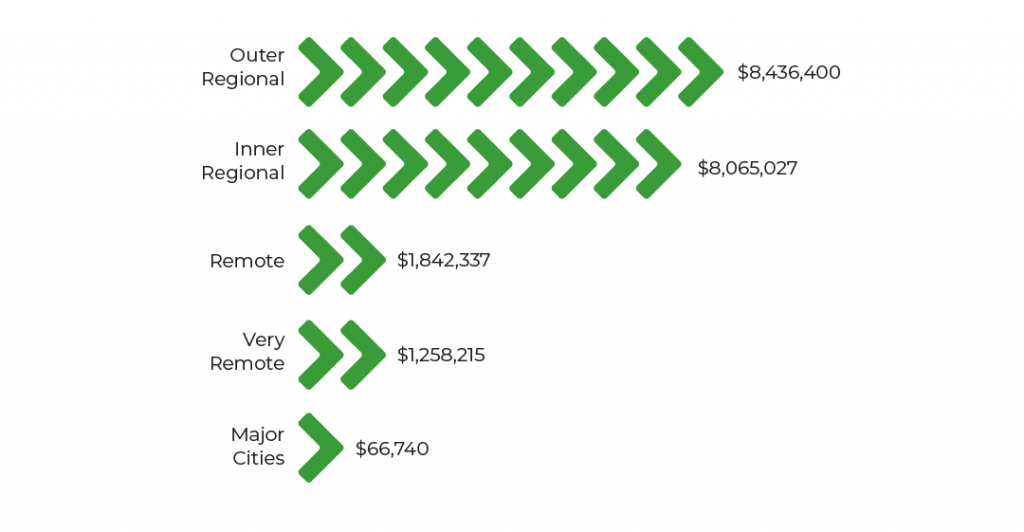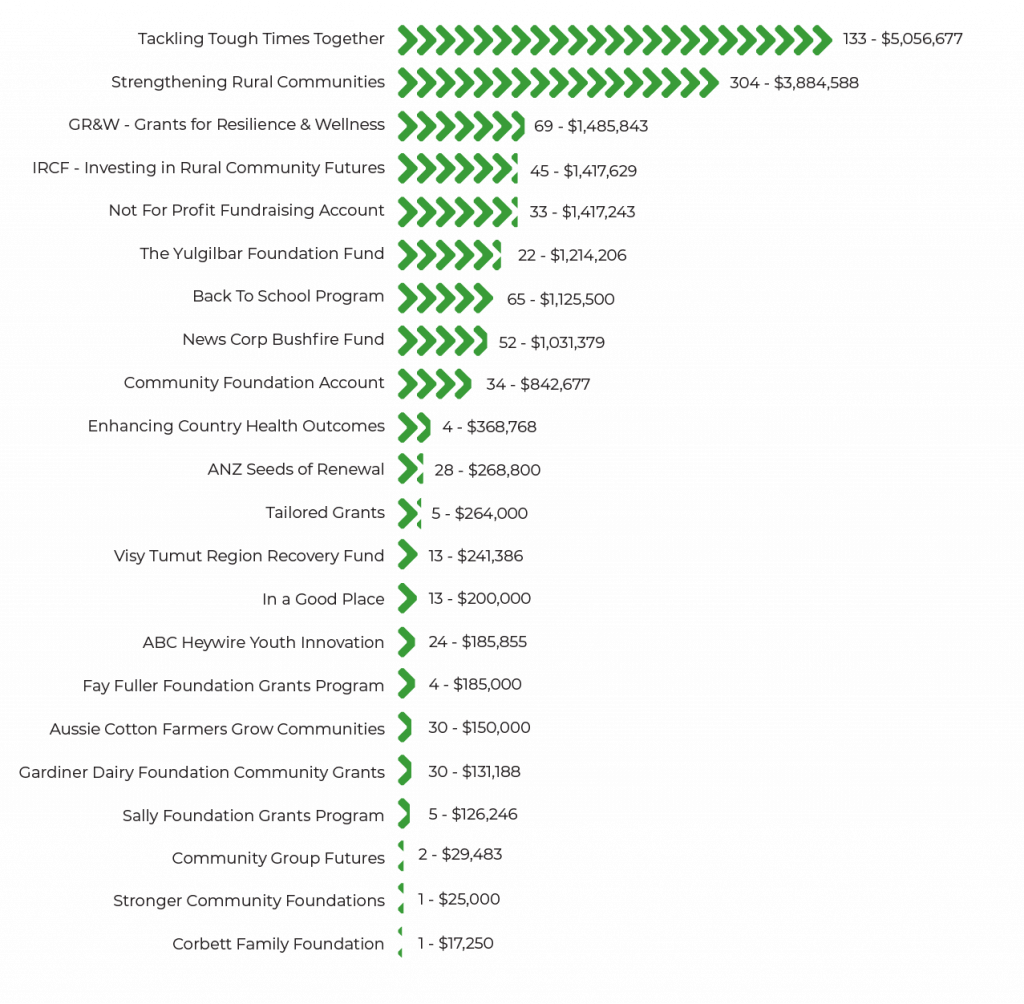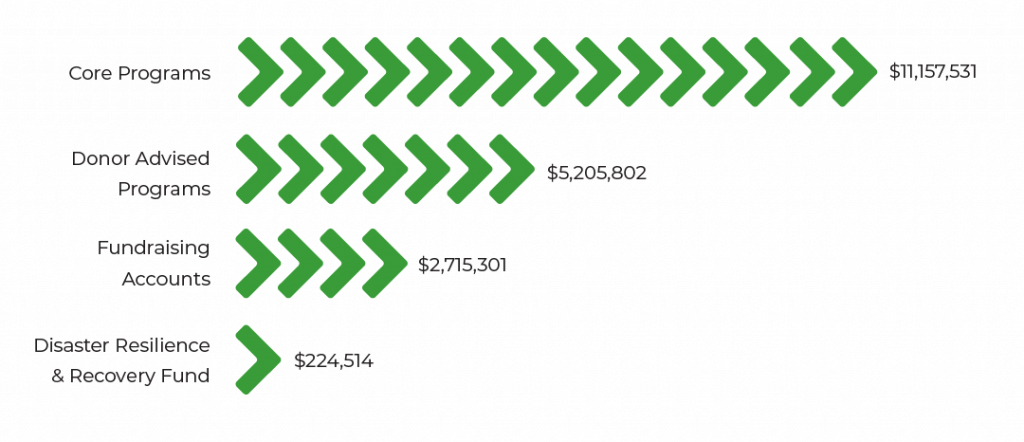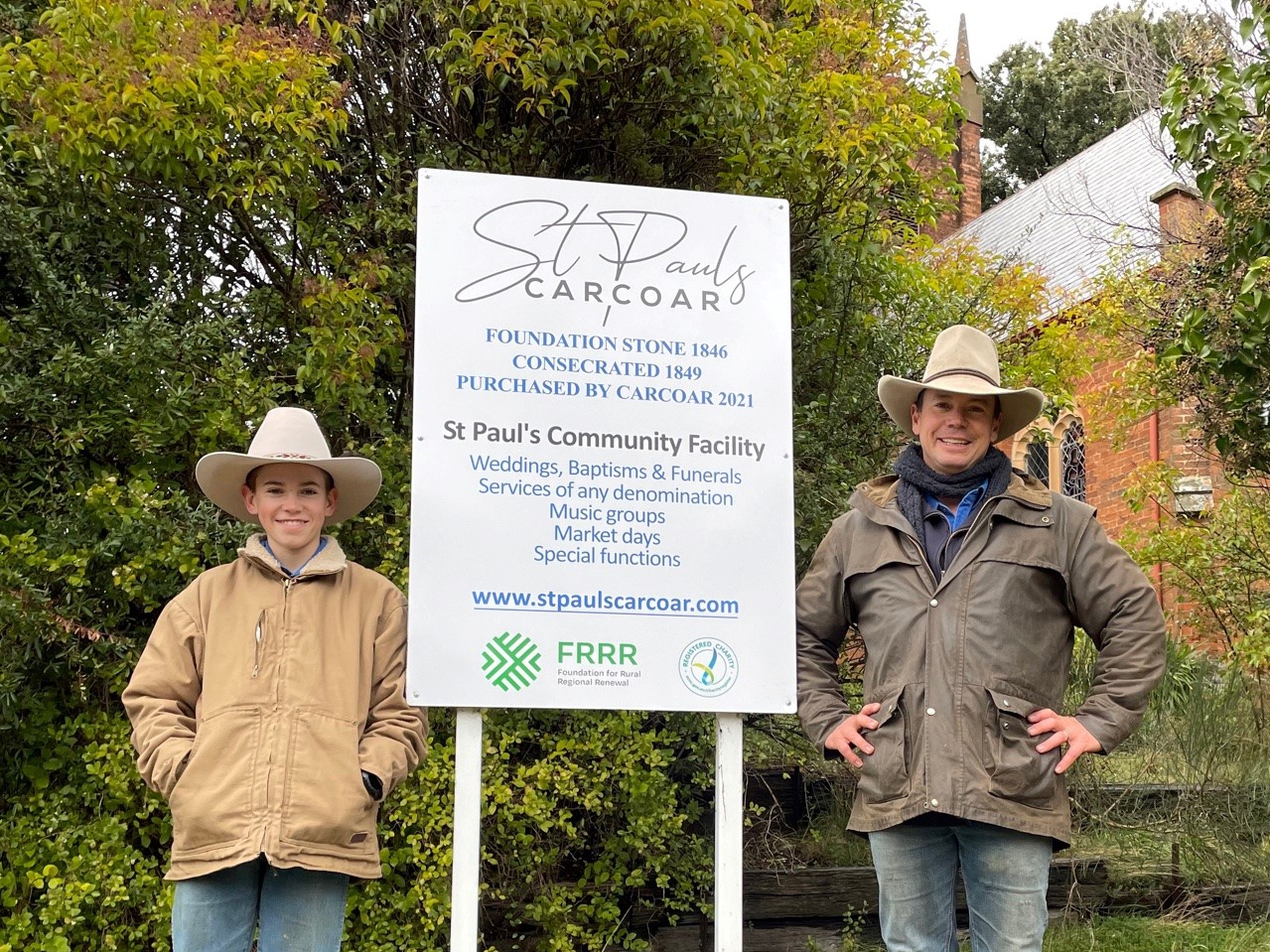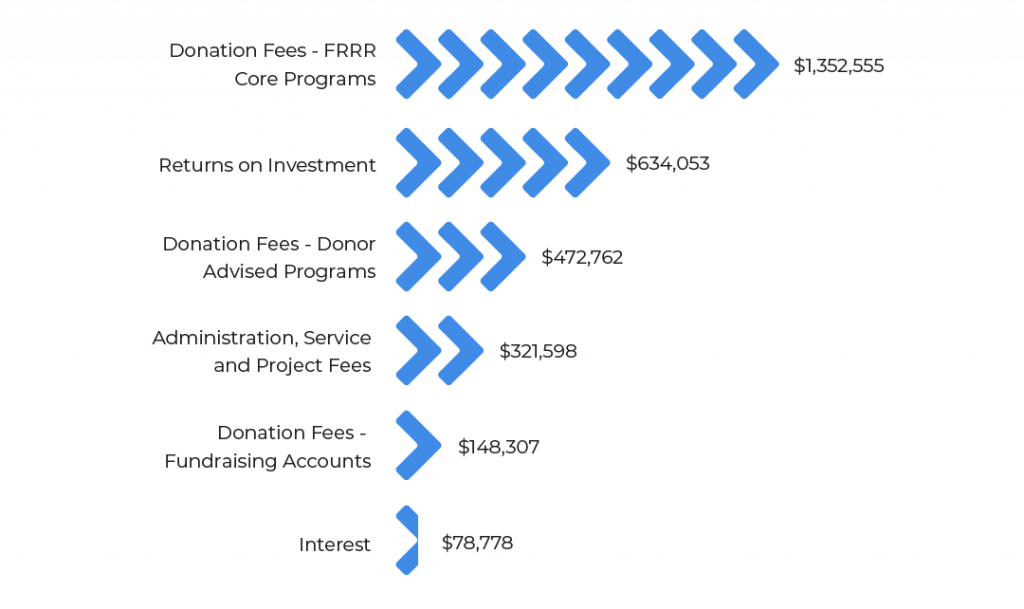Our Performance
At 30 June 2021, FRRR had 1,176 active grants under management (grants approved or paid in the last and historical financial years across FRRR grants programs, Giving Sub-Funds, and Tailored Grants). Despite the uncertainties of the COVID-19 pandemic, our grant partners managed to continue delivering vital activities in their communities, with 93 grants requiring major changes or extended timeframes for delivery.
Our work is far more than the money. Our team spend time everyday listening, learning, guiding, and coaching community groups and leaders, mostly by phone, and whenever possible, through workshops and community conversations. This year, the team spent more than 304 hours in 3,490 phone conversations and embraced online channels by delivering 16 workshops, which reached more than 660 people.

